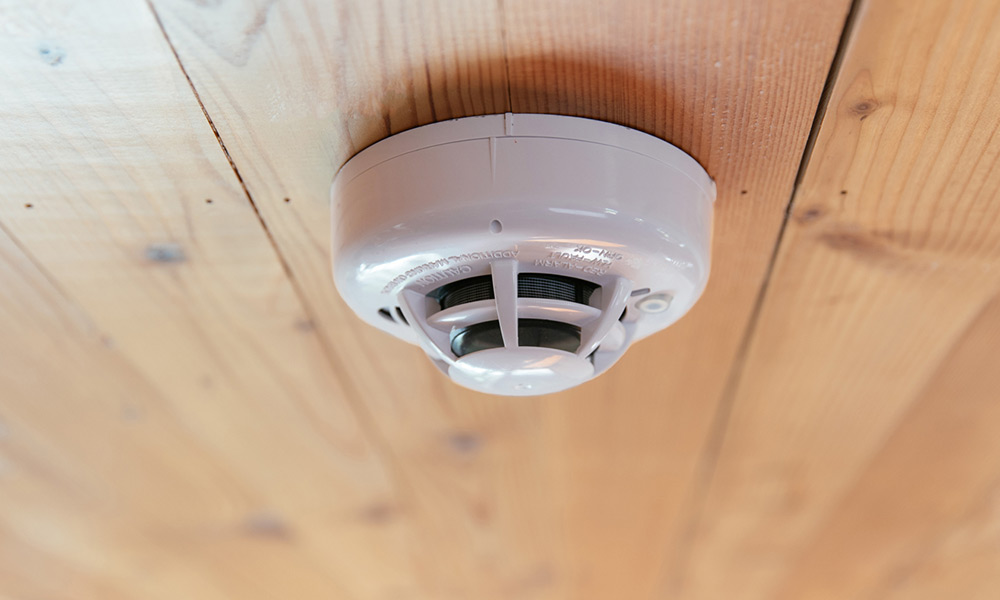Fire, regardless of its causes, has some constant and measurable characteristics: it produces gases (smoke), causes an increase in temperature, and emits radiation. For this reason, fire safety services can detect a fire in its initial phase to minimize the damage, both personal and material, caused by fire. For this reason, fire detectors play an essential role in fire protection installations.
Detectors are a vital part of fire protection systems. Different types of devices have emerged with time and technological progress, always to supply a specific need for this market. Fire safety services such as fire detectors or smoke detectors are high-quality equipment installed according to regulations, whose task is to monitor their protection area to automatically detect the presence of smoke in the air, emitting an acoustic and/or visual signal that warns of the danger of fire. This is a fundamental element for safety since it is the earliest way to identify a fire in its initial phase, which allows the activation of the necessary measures for its control and facilitates the evacuation of the affected area.
When a fire starts, together with the fire, a series of phenomena appear that are detected by fire detectors, and depending on what this phenomenon is, will be the best kind of detector:
Ionic sensors: they detect gases and combustion fumes that are not necessarily visible. They have an open-air ionization chamber (hence the name); if smoke enters this chamber, the ionization of the air is reduced, generating an alarm condition.
Optical detectors: These fire detectors have two devices, a light-emitting device, and a photoreceptor, located on different axes. When smoke enters the detector chamber, the light beam sent by the emitter is scattered and can reach the detector, thus triggering the alarm.
A particular type of optical detector is called an infrared beam detector, which has an emitter element, a reflector, and a receiver. In this type of detector, the alarm is activated when the infrared light beam received by the receiver element is below a preset intensity, in the presence of a specific smoke density in the path of the rays.
Temperature fire detectors are placed where it is inappropriate to install smoke detectors, usually in service areas such as the kitchen or garage, where there may be smoke not coming from the accidental fire.
Depending on their operation, there are also different types.
Thermal detectors: also called fixed-temperature detectors, these are the most commonly used temperature fire detectors. They are designed to trigger an alarm when the air temperature around them reaches a set limit. The most common activation temperature for this type of detector is 58 °C, although detectors on the market activate at a temperature of 47 °C, thus increasing the safety margin.
Thermovelocimetric detectors: These fire detectors are designed to trigger an alarm when they detect a rapid increase in the surrounding air temperature, around 8 °C per minute, regardless of the initial weather.
Flame detectors: Flame detectors are a type of fire detectors used when there is a risk of smokeless combustion, e.g., when combustible gases or liquids are present. Their use is more oriented to the industrial field.
Flames emit infrared radiation and ultraviolet rays. Taking advantage of this property, there are three types of flame detectors:
- Infrared (IR) detectors incorporate an infrared radiation sensor that triggers an alarm at a certain level of this type of radiation.
- Ultraviolet (UV) detectors include an ultraviolet radiation sensor.
- Combined detectors (IR/UV): incorporate both sensors to increase sensitivity and reduce the risk of false alarms.
In conclusion, the most recommended fire detectors for safeguarding lives are smoke detectors, thanks to their ability to detect the risk of fire even before combustion occurs.




